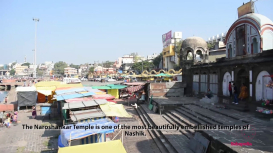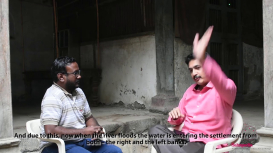The outlook towards rivers in India is being increasingly influenced by modernist perspectives and developmental agendas. The notion of controlling, harnessing, and taming rivers has been normalized in our minds, replacing the sacred and emotional connections that human societies have traditionally shared with rivers. This rupture between the materiality and immateriality of rivers demands urgent attention.
This module seeks to trace this escalating disconnect between societies and the rivers in India with the case study of Godavari River in the city of Nashik. It attempts to enable reinforcing and disseminating the idea of ‘River as Heritage’ in the Indian public sphere to encourage community-based stewardship and sustainable river management initiatives. Very close to its origin, the Godavari River meanders through the fast urbanizing city of Nashik. Apart from being religiously significant, Godavari is embedded in several personal and collective memoirs and is intertwined with the past, present, and future of Nashik. The river is degrading at a severe rate due to rampant urbanization and direct disposal of untreated (or inadequately treated) wastewater. Uncontrolled encroachment and haphazard planning along the banks of Godavari grossly interfere with the river’s morphology, thus wiping off layers of local history and thinning the existence of the river. The documentation of the Godavari riverscape in Nashik will hopefully help in capturing the nuances of the river-society interactions, which is, more often than not, overshadowed by the dominant narratives of development.


